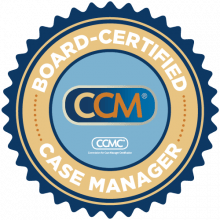Transitions of care occur when a patient moves from one setting to another. Transitions are when the patient is most at risk for a medical error or injury to occur. To prevent unintended injuries and setbacks there is a focus throughout the healthcare industry to improve processes in identifying patients at risk and implementing strategies to ensure safe transitions of care.
Many factors contribute to ineffective transitions of care as patients move from one setting to the next. The root causes often differ from one health care organization to another, but three major causes have been identified. They include:
- Communication breakdowns
- Patient and family education breakdowns
- And accountability breakdowns.
A friend of mine recently experienced a setback in her transition of care after having a subchondroplasty procedure done on her left foot in an outpatient surgical center. She posted that she was nervous about the surgery, but felt it was necessary due to the pain she was experiencing. Many of her friends responded to her post and wished her well and hoped that she would come through the procedure without any complications and would get some relief from the pain she has been dealing with.
Unfortunately, the next post on her Facebook page shared that she had an unfortunate accident as she transitioned from the outpatient surgery center to home. This note was posted by her husband and said: “Mary is in the hospital with a compound fracture of the left ankle which she sustained when entering our condo following her foot surgery this morning. She had received a nerve block for the procedure and it removed all semblance of control and she rolled her ankle as she came into the condo. To repair the compound fracture of the ankle, she required surgery, a hospital stay and will require extensive physical therapy.
I was shocked and saddened when I read the post as it shows what happens when a person had an unsuccessful transition of care. I don’t have any of the details that lead up to this event, but it seems like this was a preventable injury that could have been avoided with better communication and proactive planning. As a result of an unsuccessful transition of care, the patient suffered a serious injury which complicated her current condition, required emergency surgery, a hospital admission, additional pain and suffering as well as extensive rehabilitation to help the patient relearn to walk.
When transitioning from one setting to another, it is important for the nurses, the patient (if able) and the caregiver take the time to look at the patient’s overall condition to make surer the discharge plan is safe and meets the needs of the patient. The patient and the caregiver should not be in a rush to go home that they leave the facility without thinking of barriers they may face at home. In the same vein, the nursing staff has to take time to talk to the patient and the caregiver to make sure they can handle the patient’s condition in a safe manner.
I am not sure what happened in this case, but I know that something went terribly wrong and as a result, the patient has had a major setback. I encourage every patient and their caregiver to ask questions, and if you are not comfortable with the plan of care or you don’t think you can function safely as you transition from one setting to the other to ask for help. Asking for a nurse case manager or patient advocate to assess the situation to ensure you are safe is a critical step that should happen before every transition takes place. These professionals have the skills and expertise to assess the situation and inform the team of the barriers or issues that can cause an unsafe transition.
In my friend’s situation, maybe staying longer in recovery or being admitted till the nerve block wore off would have been safer than allowing her to go home with no feeling in her leg.
Unfortunately, there is a push to do more and more procedures as an outpatient. In the past, the patient would have been admitted till the nerve block wore off reducing the incidence of injury. The key to is to identify those patients at risk and to err on the side of safety. As a healthcare team, WE have to do better!
Resource:













